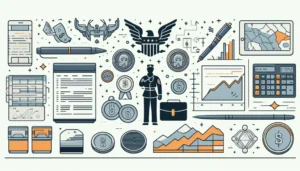The aggregation of marginal gains is a concept made famous by British cycling coach Dave Brailsford, who lead the British cycling team to 10 gold medals at the 2008 Beijing Olympics. Prior to this, the team had not managed any significant wins.
Brailsford believed that victory at the Olympics would be achieved by focusing on a 1% margin for improvement in everything they did. He decided that he and his team would focus on improving every aspect of performance and these aggregations would add up. Examples of seemingly insignificant things they focused on, included:
- Hiring surgeons to teach athletes about proper hand-washing to avoid illnesses during competition
- Choosing not to shake any hands during the Olympics for the same reason
- Implementing precise food preparation procedures
- Bringing their our own mattresses and pillows so athletes could sleep in the same posture every night
- Painting the floor of their bike trailer white so they could more easily identify dust and remove it
To quote the man himself:
We searched for small improvements everywhere and found countless opportunities. Taken together, we felt they gave us a competitive advantage.
He believed that if you improved every area related to cycling by just 1%, those small gains would add up to remarkable improvement. As the video below explains, for Brailsford, this meant focusing on optimizing exercise, rest, nutrition, team management, morale, and equipment–not just time spent on the bike.
To anyone taking on any large goal–whether reaching FI or trying to secure gold at the Olympics–it can seem like an overwhelming task to get from where you are to where you want to be.
But applying small changes and accumulating optimizations is where you can truly strike your own Olympic gold on your path to financial freedom.
1. Understanding The Danger Of Marginal Losses
Making sweeping behavior changes can be overwhelming and often, unrealistic.
For someone who has battled obesity throughout my life, my weight struggles didn’t happen overnight. It was often the result of small choices, time after time, that lead to a weight that I wasn’t happy with.
And this is the way it works for the majority of us. The Washington Post found that most men and women gain 1 to 2 pounds each year in their 20s. Each year’s gain may not seem like a big deal on its own.
But by 30 years old, the average male weight rises from 185 pounds to 200 pounds, and the average female weight rises from 162 pounds to 170 pounds.
This is the danger of marginal losses. They are almost imperceptible at any given moment, but over a long period of time have a huge effect.
The Danger Of “Lifestyle Creep”
We often see this correlation with what we’ve termed as “lifestyle creep,” where families slowly and steadily get off track as their incomes improve.
Instead of staying the course and saving money, they start spending just a tad more as they earn more. The aggregation of all these small increases really adds up to bust a budget. Other “marginal losses” when it comes to personal finance may include:
- Eating out once or twice more during the month
- Making less-than-stellar decisions with an increased credit limit
- Simply telling yourself you “deserve” a brand new luxury car because you got a raise
These are all small losses that paint a big picture of debt. It’s one problem that most FI’ers recognize, or may have even found themselves in at one time.
But while the aggregation of marginal losses can paint a bleak picture, it also paves the way to an achievable, FI-friendly path forward.
Related: The ‘Make Life Better Journal’ To Track Your Improvements [Spreadsheet Included!]
2. Understanding The Power Of Marginal Gains
It’s easy to spend time on the ChooseFI message boards, or read about bloggers who have achieved FI, and lament their wins. Surely they had a stroke of luck, were far smarter than you, or, perhaps they had a rich uncle who recently died.
Seeing other people’s accomplishments sometimes makes us believe that some big “make or break” moment leads them to hit their financial goals.
Yes, it may be true that some folks hit FI because they had a long-lost rich auntie who gifted them a mansion, and others did work hard but pulled in $150,000+ a year as a nuclear engineer.
While these factors are important to consider, the truth behind any success–FI or otherwise–is that it happens as the result of the smallest decisions we make over time. Our next case study is a great example of this.
Related: The Baby Steps Of FI
From C-Minus Student To Guinness World Record Holder
Stephen Duneier grew up as a C-minus student who had difficulty focusing during class. To put it another way, Stephen didn’t hit the intellectual jackpot. He struggled his way through school like the majority of us.
But what sets Stephen apart is that he made a decision to hyper-focus on one thing at a time in his life, and then find ways to improve in that area through marginal gains.
By applying his marginal gains philosophy, Stephen not only became a world-renowned institutional investor but has accomplished a myriad of other learning and giving goals, including:
- Learning to speak German
- Learning to fly a helicopter
- Setting the Guinness World Record for the largest crocheted granny square
- Reading 50 books in 52 weeks
- Hiking all 32 trails in Santa Barbara’s mountains
- Running in the Pier to Peak half-marathon
- Performing at a comedy club
- Having a root canal without anesthetic
- Learning to fly a plane acrobatically
- Building homes for Apache families in Arizona
Check out the video below to hear Stephen talk more about his journey.
Stephen’s story is another example of how choosing to focus on small gains when done consistently and in tandem with other positive efforts, yields results. Aggregating marginal gains makes it happen.
Related: 50 Ways To Improve Your Finances By 1%
Applying The Power Of Marginal Gains
Using this philosophy towards a victory on our path to FI, applying a 1% improvement means looking at not just the money we invest or how we invest it, but everything that impacts the goal.
For us, it means looking at our entire lives as an ecosystem that is interrelated–our health, social lives, where we live, our work and career, what we eat, what we do for entertainment, and where we spend our time.
Here are some examples of how you can apply marginal gains to different areas of your life.
Marginal Gains At Home
- Move to a lower cost area/closer to work
- Make your home more energy-efficient
- Refinance your mortgage
- Take advantage of house hacking to reduce your housing cost
- Put one of your spare bedrooms up for rent on Airbnb
Marginal Gains In Your Career
- Negotiate for a raise
- Find a job that’s closer to home
- Find a job that has a flexible work policy (which allows for you to add a side hustle)
- Take advantage of a 401(k) match.
- Take advantage of continuing education courses or certifications that could result in higher pay
Health
- Cut your grocery bill and eat better foods
- Exercise regularly
- Visit your doctor and dentist regularly.
- Get enough sleep and try to keep a consistent sleep schedule
Personal
- Read finance and personal development books
- Surround yourself with people aligned with your goals
- Develop a side hustle to earn more income and build new skill sets
Investing
- Increase the amount you contribute to your IRA or 401k accounts by 1% each year
- Find index funds with lower expense ratios
These are just a few examples but they will all help you move the needle forward towards FI.
Reading a book a month or joining a running club to get healthy may not seem like it makes much of a difference. But combined with your other efforts to live financially free, you may soon find that you’ve made more progress than you could have ever imagined!
Related Articles:
- Talent Stacking: The Fast Track To FI
- How To Save Incredible Money By Learning One New Skill Every Month




